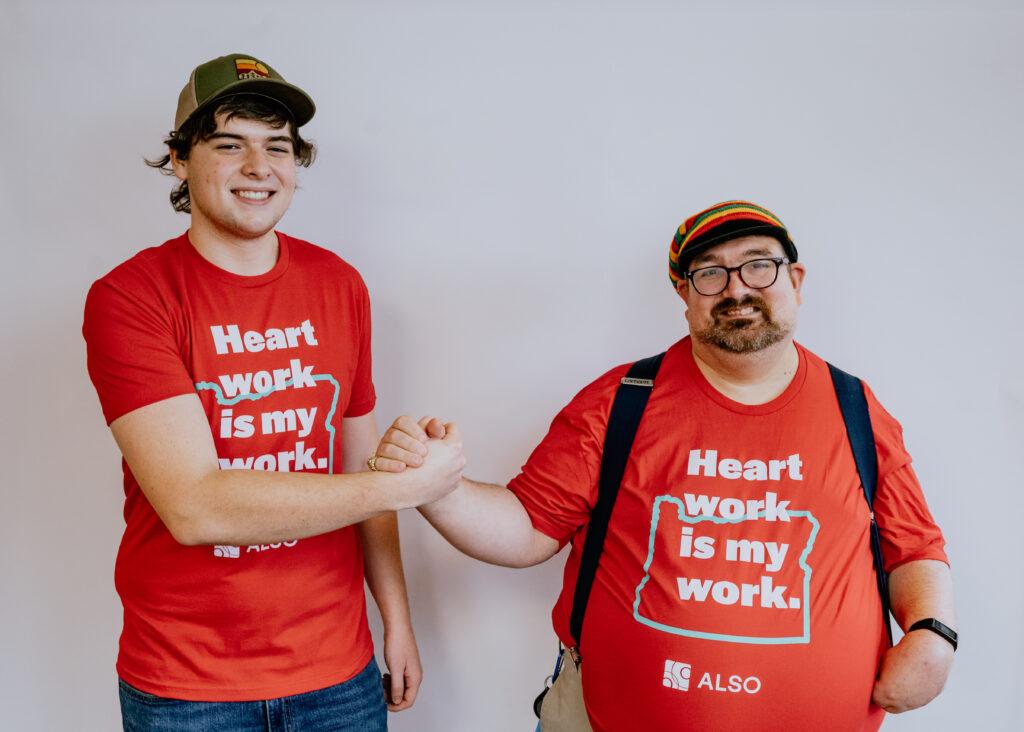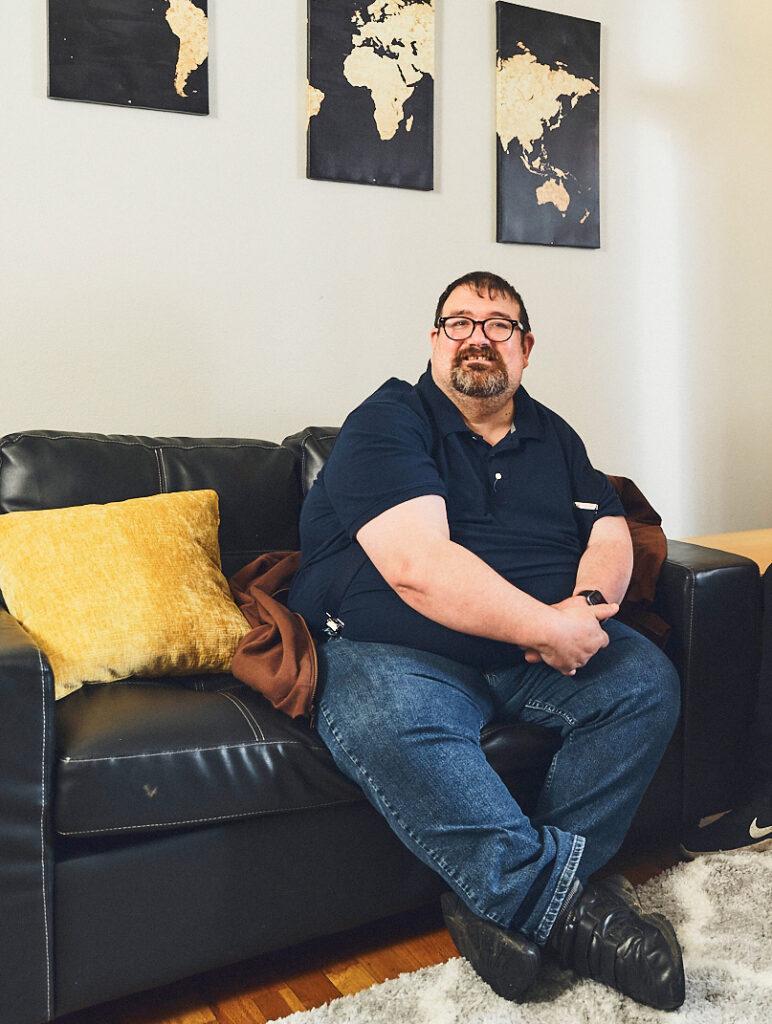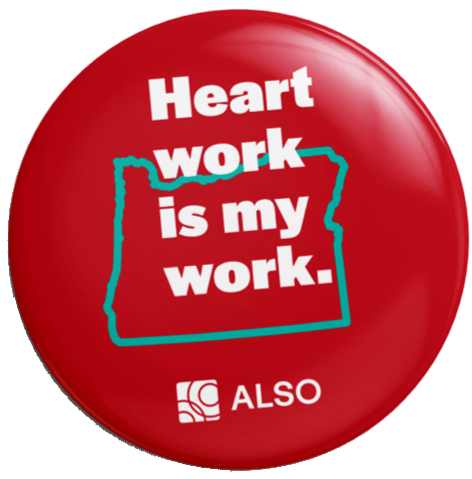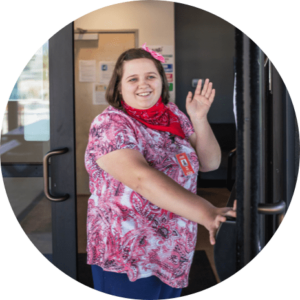Affordable housing for people with I/DD is in low supply. Learn what ALSO is doing to make a difference.
Affordable housing for people with I/DD is in low supply. Learn what ALSO is doing to make a difference.

Joe arrives at our interview on his electric bicycle, having cycled to the coffee shop from his home in Tualatin. The thirty-six-year-old lives in his one-bedroom apartment by himself, apart from his dog, Jupiter, a miniature whippet-Chihuahua mix that Joe says is “pretty much the center of my world right now.” Joe works at Safeway as a general courtesy clerk, just part-time so as not to risk his Social Security benefits and the supported living services he receives from ALSO. When asked, he describes a typical day in his life: working, cycling, taking care of his dog and his apartment. Joe laughs easily and often and loves a good pun. He’d like his tombstone to read, “Not appreciating my puns was a grave mistake.” We wrap up our interview early, so he can go fishing before it starts to rain.
It’s a good life, but not an especially remarkable one—until you learn that Joe was institutionalized until he was eighteen years old, starting at the age of three.
“I used to be in something similar to Fairview Training Center,” Joe says. (Read more about Fairview in Part One). “They didn’t know how to deal with people with autism then.” He was in several institutions growing up, where he was on “a whole smorgasbord of medications.” Joe, who by his own admission is sometimes too kind for his own good, is quick to say that not everything about the institutions were bad. He even says one of them furthered an understanding of autism. “The last place I was at was Texas Neurological Rehab Center, which also functioned as kind of a lockdown facility for people with neurological and behavioral problems…The people who were testing me helped me with my motor skills and used EEGs to see what was going on inside my head. Those are the good parts. The bad was the living situation. There were some ‘staff’” —Joe makes air quotes—”that apparently liked to exercise their authority a bit too much. That’s all I’m going to say about that.”

When Joe was eighteen, he left the institution and moved back home. “I have a very supportive family,” he says. “They did not like the fact that I was in that institution, but back then they didn’t know what else to do.” After leaving the institution, Joe says it was a bit of a rollercoaster ride. “It wasn’t until I came to ALSO and the group home where I lived when they finally got my medication all taken care of.” Once he got off the rollercoaster, Joe was able to move into his apartment, utilizing supported living services.
An ALSO staff member visits Joe several times a week. “There are some things that I just can’t do on my own, or don’t think to do on my own,” he says, “like sometimes I still forget to take my meds, and sometimes I let things pile up too much, like laundry. They also take me to do my shopping and take me places I can’t go on my bike, like Portland. I lose all my battery when I go into Portland on my bike.”
Every year Joe, ALSO staff, Joe’s case worker, and family review Joe’s Individual Service Plan (ISP) to make sure everything is going well, and to set goals. Joe’s doing so well these days that his goal right now is to become a homeowner. “There are a few government-assisted programs for home ownership, and I’m planning on tapping into one of those this year. I’m building my credit, which is actually higher than my mother’s right now.” He laughs. “My credit has been so good; banks are actually sending me offers for a mortgage.”
Thankfully, more and more people with Intellectual and Developmental Disabilities (I/DD) are getting the opportunity to have lives like Joe’s, as many state-run institutions are being shut down in favor of community living options. This is partly due to the impact of the Olmstead Decision, which decreed that people with disabilities have the right to receive treatment in an integrated setting within certain parameters. Unfortunately, however, as of 2019, 32,380 Americans with I/DD still lived in large state institutions, and over 100,000 more live in other restrictive settings, like nursing homes.
That number may be even higher, as many people with I/DD may be housed in psychiatric or even criminal institutions. A 2022 clinical study found that “lack of clinical and policy knowledge about I/DD and lack of training are common among first responders, resulting in misdiagnosis and mistreatment that are associated with an exacerbation of dysfunction and disability, higher rates of psychiatric comorbid conditions, conduct problems, and overrepresentation in justice and forensic settings… Lack of IDD knowledge among first responders can also explain why…most individuals with IDD are disproportionately treated via mental health services and systems.”
Perhaps it’s this lack of training that explains why some people with I/DD live in institutions instead of the community. Or maybe, as Joe noted, it’s because society doesn’t know what do with them. The reason is not money. It’s more expensive for states to serve people within institutions—a lot more. “The Cost of Deinstitutionalization: Comparing the Cost of Institution Versus Community-Based Services”, a report by The National Council on Disability, found that the average annual expenditure for an individual in a state institution was $188,318 compared to $42,486 for Medicaid-funded home and community-based services. It’s not about the care available in large institutions, either, as neglect and abuse scandals have rocked most at some point in their history. And it’s not necessarily about the severity of the disability. Though the proportion of people with severe disabilities living in Institutions has increased as their general populations have decreased, “looking at the proportion distorts an important reality,” according to the National Council on Disability, which says, “The vast majority of people with ID/DD who have extensive needs for health and behavioral supports live in the community. Every person being served in an institution has a ‘twin’ with the same functional needs living in the community.”
And though, as Joe says, institutions may not be all bad, institutionalized people don’t get to make choices that can elevate their lives. Unlike Joe, someone living in an institution doesn’t get to own a pet, to decide to go fishing on a beautiful spring day, or to pursue a dream, like owning a home. Joe thinks that most people could manage a supported life in the community if they received the kind of support he has received from ALSO. He states, “If they took ALSO’s approach where I was living in a group home and then transitioned to supported living after I was stable, that’d be pretty cool.” And he definitely thinks most people would want to live in the community instead of an institution. “Once someone is transitioned to community living, they’ll never ever want to go back. Offer them a taste of community living, and they’ll work toward it, I think.”
ALSO provides the supported living services and residential services that enable people with Intellectual and Developmental Disabilities to live in their communities, to make choices for themselves, and to pursue their dreams. Learn more about us, and support independence, choice, and community for people with intellectual and developmental disabilities.

Sign up for our newsletter to get our latest news, content, and job opportunities.
Help us ensure that everyone has the same opportunities in their home, workplace and community. Let’s make dreams!
